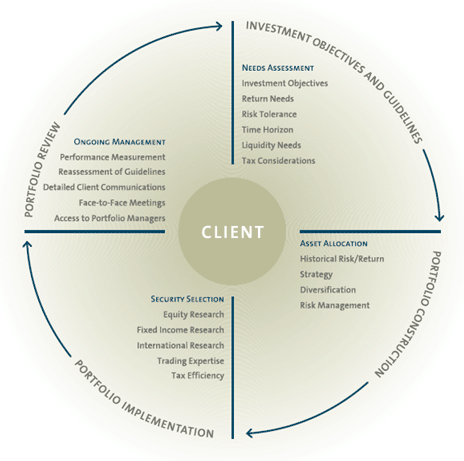Investment Objective Investment Risk Tolerance
Post on: 14 Апрель, 2015 No Comment

Understanding the Words on Your Statement
Have you ever looked at the first page of your statement and wondered what Investment Objective and Risk Tolerance mean? These are actually investment guidelines you have chosen, guidelines which we try to follow when we help you select smart investments. We use your investment objective (income, growth and income, growth, or trading/speculation) to help you clarify your investment ideas and identify your risk tolerance, which is the level of risk of loss you’re willing and able to tolerate in order to achieve your investment goals.
All Investments Involve Risk
Although all investments involve risk, including the potential loss of principal, some securities (such as equities) involve more risks than other securities. Higher-risk investments may have the potential for higher returns, but also for greater losses. The higher your risk tolerance, the more you may invest in higher-risk securities offering the potential for greater returns. While there is no foolproof strategy to ensure you are making safe investments, our financial advisors will be there to help you make informed decisions.
Defining Your Investment Objective & Risk Tolerance
Generally speaking, investment objectives span a spectrum with Income investors generally having few high-risk investments in their accounts and Trading and Speculation investors having more high-risk investments in their accounts. Similarly, risk tolerances start with Conservative and move to Moderate, then Long-Term, and finally Trading/Speculation. At each step, an investor is willing to accept more risk.
Below, we have provided basic definitions for the different investment objectives and risk tolerances:
Income Investors
Income investors seek a maximum amount of income given their risk tolerance, and are willing to forgo capital appreciation and growth of income in order to seek a higher level of current income.
- Risk tolerance conservative. Conservative income investors seek the maximum amount of income consistent with a modest degree of risk. They are willing to accept a lower level of income in exchange for lower risk. Equities and high-yield bonds will typically not be a large percentage of the account.
- Risk tolerance moderate. Moderate income investors seek to balance potential risk with increased income potential. Equities and high-yield bonds will typically be some percentage of the account.
- Risk tolerance long-term. Long-term income investors seek a significant level of income, and, due to their long-term time horizon or other factors, they use higher-risk, more aggressive strategies that may offer higher potential income. Equities and high-yield bonds may be a significant percentage of the account.
Growth & Income Investors
Growth and income investors seek current income, but also seek income and capital growth over time. These investors are willing to forgo a portion of current income in order to provide for potential future growth.
- Risk tolerance conservative. Conservative growth and income investors seek the maximum growth and income consistent with a relatively modest degree of risk. They are willing to accept lower potential returns in exchange for a lower-risk investment. Equities will typically be some percentage of the account, and will typically pay dividends.
- Risk tolerance moderate. Moderate growth and income investors seek to balance potential risk with higher potential growth and income. Equities are typically a significant portion of the account, and will typically pay dividends.
- Risk tolerance long-term. Long-term growth and income investors seek a significant level of growth and income, and their long-term time horizon and/or other factors allow them to pursue higher-risk, more aggressive strategies that may offer higher potential returns. Equities are typically the primary asset in the account, and will typically pay dividends.
Growth Investors
Growth investors do not seek account income; their primary objective is capital appreciation.
- Risk tolerance conservative. Conservative growth investors seek maximum growth consistent with a relatively modest degree of risk. They are willing to accept lower potential returns in exchange for lower risk. Equities will typically be a significant portion of the account.
- Risk tolerance moderate. Moderate growth investors seek to balance potential risk with their goal of higher potential growth. Equities are typically the primary asset in the account.
- Risk tolerance long-term. Long-term growth investors seek a significant level of growth, and due to their long-term time horizon or other factors, they use higher-risk, more aggressive strategies that may offer higher potential returns. Equities may be as much as 100% of the account.














